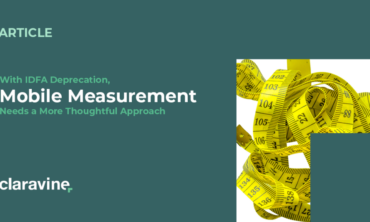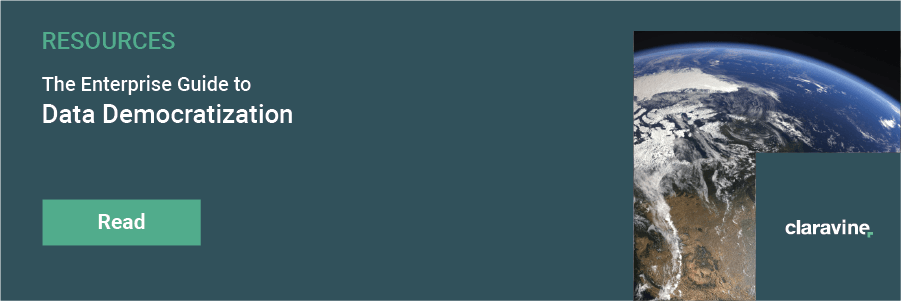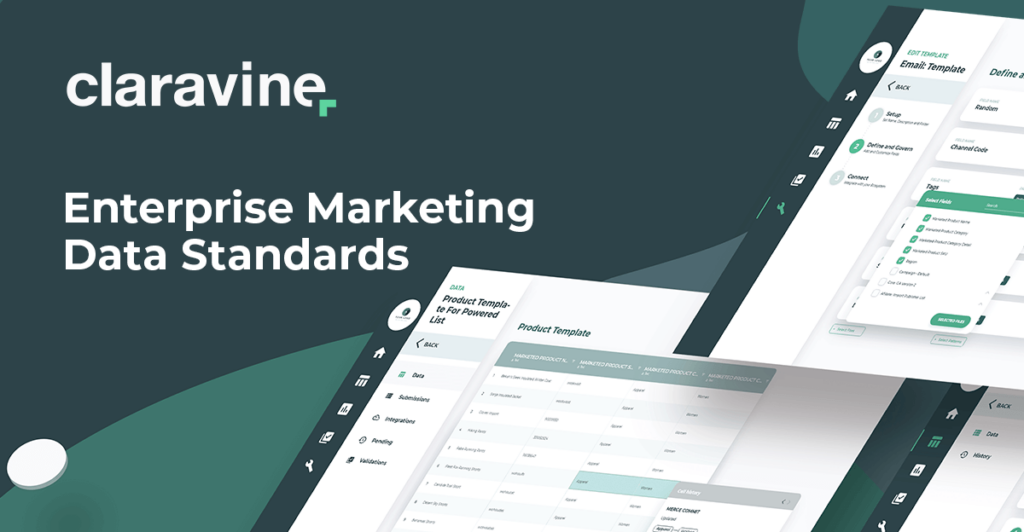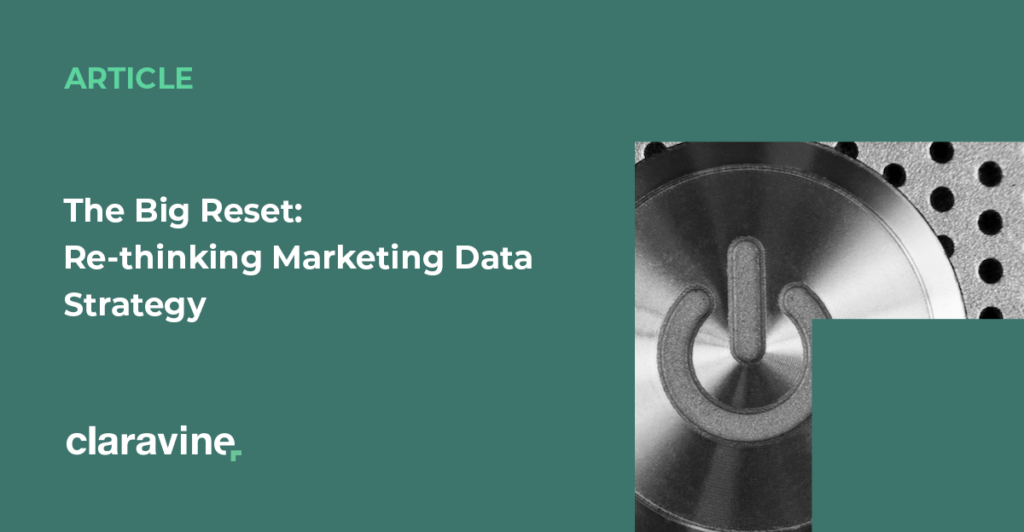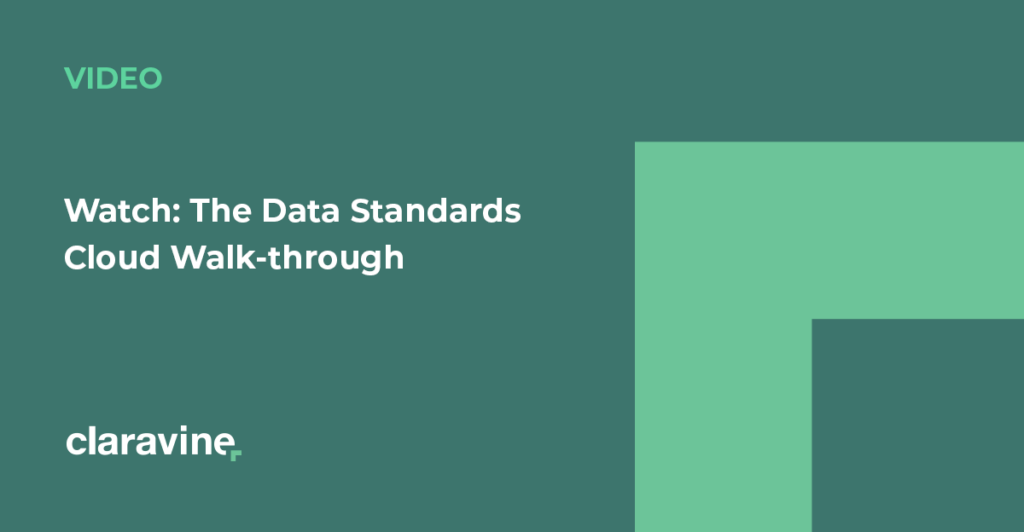How a Proactive First Party Data Strategy Avoids Costly Growing Pains

It’s almost “lights out” for 3rd-party cookies, yet only 34% of brands have a strategy to accommodate the changes.
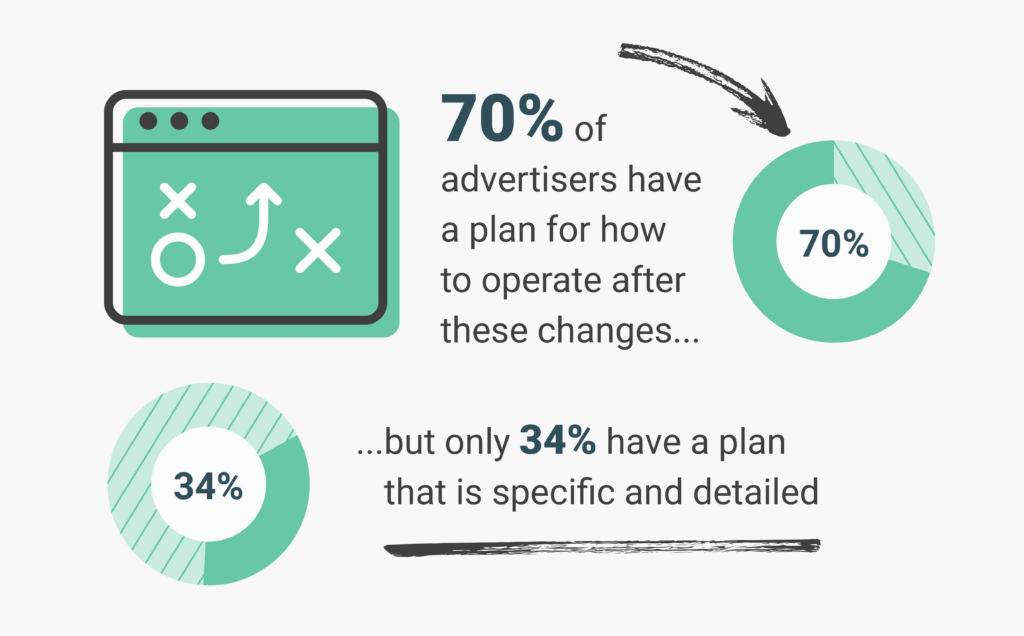
We get it — while a first party data strategy shift is logical and ideal, it’s not like you’e just flipping the switch from “3” to “1”. Transitioning to first party cookies and other ways of collecting 1P data faces plenty of complications, which we’ll dive into here.
Learning about the challenges you’ll face — and knowing how to proactively combat them — sets your organization’s 1P data strategy up for success.
That’s why we’re sharing insights from our study on 1P data adoption as well as from brands currently navigating the transition. And guiding you on how to prepare for and overcome the challenges ahead and forge into first party data with confidence.
But first, in case you need to be reminded why you’re putting yourself through this shift in the first place…
Solving Your 1P Data Strategy Challenges
First-Party Data: The Best Kind of Data
The information you collect directly from your prospects and customers is the holy grail of marketing data. It’s about as trustworthy, accurate, and insightful as it gets.
Prioritizing first-party data is mission-critical given the deprecation of third-party cookies and the expectation for personalized customer experiences that respect consumer privacy. So it’s not surprising that our study found that 72% of advertisers plan to increase their budgets and staffing to collect more 1P data in 2022.
But every investment begs a healthy return.
Advertisers and marketers in every industry and sector who rely heavily on third-party data have to rethink their marketing data strategy and prepare their people and infrastructure to leverage the data they collect, organize, and analyze themselves.
1P Data’s Silo Problem
Before addressing specific challenges, let’s acknowledge that first party data has a silo issue. And it prevents many organizations from actually benefitting from 1P data.
You’ll improve your 1P data strategy’s chances of success by eliminating data silos in favor of a single, trusted enterprise data source accessible and usable across the organization. In fact, your entire data strategy can accelerate when silos crumble and ecosystems rise in their place.
So before you prioritize individual first party data challenges, take a step back and audit your company’s existing data framework — keeping an eye out for problematic silos.
If you don’t, the problems discussed below specific to 1P data will be the least of your worries.
The 7 Challenges You’ll Face When Activating Your 1P Data Strategy
Let’s get to it: seven challenges marketers and advertisers face as they launch and scale a first party data strategy.
1. Exacerbating the Data Silo Problem
Let’s get this out of the way while we’re on the topic of silos: “more data” is not going to remediate the problems resulting from data silos. Neither will a change in source from third party to first party.
First-party is the most valuable information you can obtain about your customers and prospects, so easy access is essential. Again, that’s difficult to do unless you’ve eliminated silos and invested in the right technology.
Valuable 1P data often gets stashed all over the place, such as:
- Analytics’ SaaS platforms
- Marketing’s social media management platform
- Customer support’s ticketing system
- Sales’ CRM tool
- Procurement’s invoicing platform
Sharing information when systems aren’t connected is challenging and time-consuming. When siloed, leveraging the data to achieve enterprise-wide goals can be next to impossible.
2. Introducing More “Data Without Context”
“Ensuring that all data is properly organized and tagged so it can be easily accessed when needed is a challenge,” says Max Benz, founder and CEO of BankingGeek.
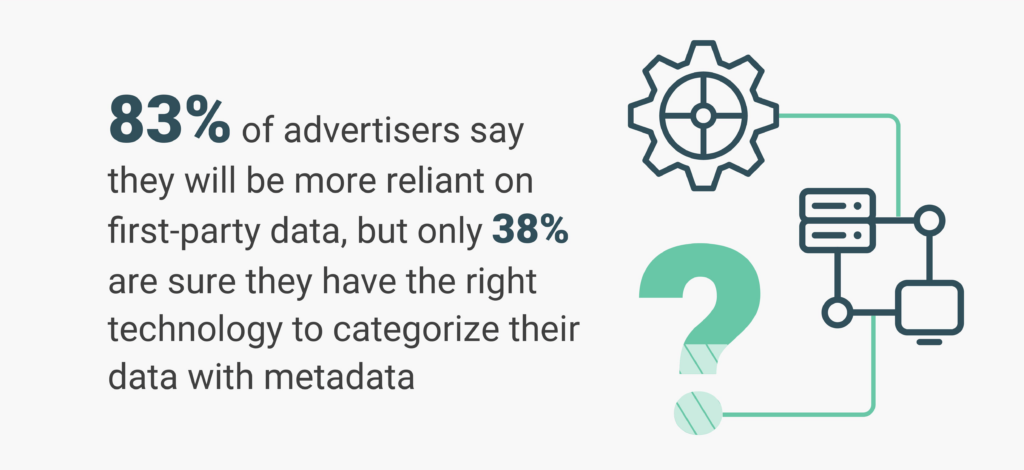
According to our research, only 38% of brands that embrace a 1P data strategy have the technology to bundle that data with context and categorize it usefully with metadata. In other words, many are simply introducing more data they can’t leverage for business objectives.
 “We are working to develop better systems for analyzing and interpreting large amounts of data to help us make more informed decisions about our business operations,” Benz explains. Because data that’s incomplete or lacking the ability to be understood outside its original silo won’t be deployable across the org for data-driven decisions.
“We are working to develop better systems for analyzing and interpreting large amounts of data to help us make more informed decisions about our business operations,” Benz explains. Because data that’s incomplete or lacking the ability to be understood outside its original silo won’t be deployable across the org for data-driven decisions.
Continuing to collect data without meaning or enrichment not only impacts the usefulness of your 1P data, it compounds any issues you have managing data sprawl. And as we’ve said before, the impacts of bad marketing data reach far beyond your team.
Benz is approaching the challenge by “establishing a centralized data repository, instituting policies and procedures for sharing data, and investing in tools that facilitate collaboration.” He’s also engaging people and teams to rally around data sharing for more enriched, available data. His ultimate goal? To “enable better decision-making across the enterprise.”
And when those decisions are rooted in trusted, precise, customer-centric first party data, the business can innovate with confidence.
3. Failing to Collaborate
You may think, “more 1P data means more data-driven collaboration,” but the reality is probably bleaker, since only 40% of advertisers are maximizing their 1P data.
Just because they’re gathering more first-party data doesn’t mean they know how or are equipped to use it for data-driven business decisions individually, let alone among teams or cross-functionally.
For example, some advertisers may not be adding meaning to their data. Others may be funneling 1P data into existing silos. Others may depend on SaaS platforms that cannot accept newly collected 1P data.
All of these practices encourage a single-use purpose and prevent collaboration across the enterprise — so adding additional 1P data just exacerbates the problem, making it harder to produce true data-driven results.
Beyond collecting and activating 1P data, answering the question of, “how will other teams use this data?” becomes a crucial element of your overall first party data strategy.
4. Complicating Forecasts and Finances
According to IDC Market Research, ineffective data management costs organizations 20-30% of revenue every year. Introducing more first-party data to the mix could worsen their losses. Gartner’s research has similarly found losses in the tens of millions due to poor data quality.
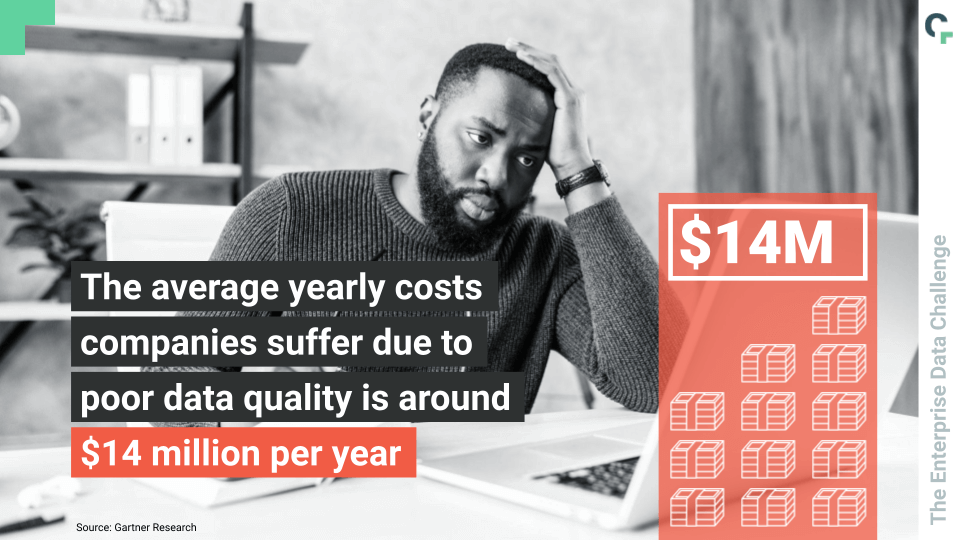
Mark Moeder, CEO of Symphony MediaAI relates how one client’s inability to integrate their 1P data directly impacted their bottom line.

“They were struggling with siloed financial data between customer sign-up and billing systems. It turned out there was a previously undetected discrepancy that prevented them from charging thousands of customers, totaling over $1 million in revenue leakage,” he says.
By not properly addressing first party data around billing and sign-up details, the company lost out on substantial revenue because it didn’t even bill the customers.
While first party data can add an exciting element to data-driven decisions and processes in forecasting and finance, it also exposes risk. Ensuring the right governance and visibility within your trove of 1P data can insulate from these types of calamities.
Whether it’s a question of data collection UX, backend processing, data oversight, or something else, the predicttion and automation benefits of first party data cannot be approached without careful consideration and proper safeguards.
5. Straining Resources
You’ll need the right technology, processes, procedures, and people to efficiently handle more first-party data. So when 72% of advertisers admit to a lack of necessary resources and manpower, strained resources become an important hurdle to clear.
 According to Rodney Warner, CEO of Connective Web Design, “you need skilled data professionals to run these large data tools — data analysts, engineers, or scientists. We didn’t have these professionals initially and faced big data challenges.”
According to Rodney Warner, CEO of Connective Web Design, “you need skilled data professionals to run these large data tools — data analysts, engineers, or scientists. We didn’t have these professionals initially and faced big data challenges.”
Unfortunately, in-house talent is often spread thin.
Anaconda found that data scientists spend about 45% of their time on data preparation, which includes data loading and cleansing. When multiple versions of data sets are in different systems, their duties become even more challenging. Data preparation “takes valuable time away from real data science work and has a negative impact on overall job satisfaction,” according to Anaconda’s assessment.
Given the strong demand for data scientists, you’ll want to make sure yours are happy. What’s more, your company’s leadership is keeping an eye on ROI for every investment — including data engineers — and that return is better realized through analysis and insights, rather than cleaning up data just to get it to the starting line.
Of course, there are ways to remove the burden of data cleanup from these scientists and engineers — more on that later.
6. Misinforming CX
Your prospects may have several interactions with your brand before they become customers. Unfortunately, data silos or 1P data mismanagement can bring the customer journey to a screeching halt — sometimes during their first visit to your website.
Erroneous, segregated data hurt the customer experience, according to Sean Nguyen, director of InternetAdvisor.
“Basically, some data was old, and some data was new, meaning different departments had different ideas of what customers wanted from our business,” he explains.
“This meant we couldn’t provide our audience with a good experience when they were searching for internet service providers — having siloed data simply prevented us from doing that.”
We don’t need any stats to remind you how important positive customer experiences are to growing your business. Remember: just because you’re committing to first party data (directly from your customers) doesn’t mean you’re automatically providing a better experience.
7. Limiting Your Data Pool
Soon, advertisers won’t be able to rely on big tech to share user behavior, web browsing, and geo-location data, and they’ll have to adjust their attribution models.
While 1P data is trustworthy, there are limits to what you can do with it and how much you can collect. Saatchi & Saatchi’s director of ad operations, Kendra Kitagawa, warns against “going all-in” on 1P data.
 “One of our clients doesn’t have a login or anything that collects user data — they have their customer base, and that’s it. Going all-in on first-party data would severely limit their potential audience. They’d miss out on opportunities to prospect and use market signals to create a seamless customer experience.”
“One of our clients doesn’t have a login or anything that collects user data — they have their customer base, and that’s it. Going all-in on first-party data would severely limit their potential audience. They’d miss out on opportunities to prospect and use market signals to create a seamless customer experience.”
Note how she also connects this limited data pool as a possible negative influence on customer experience, as discussed in the previous section.
The shift to first party data is ingrained with the concept of ‘less, but better’ data, but the reality for many companies is that focusing only on 1P data can be too limiting. Luckily, solutions like clean rooms, cohort marketing, and second party data can fill in some gaps. But it still requires marketers to carefully audit their 1P data strategies and honestly identify any blind spots.
Solving Your First Party Data Problems
Many of these problems can be avoided by having the right processes and procedures in place. For marketers and advertisers that have relied on third party cookies and device-level tracking to target audiences, switching to a 1P strategy can feel like a paradigm shift. It’s crucial to establish a foundation for success.
Here are some best practices for shifting to a 1P data strategy.
Establish Data Standards
Data standards guarantee that everyone speaks a common language and approaches sharing, storing, and interpreting data in the same way.
Applying standards to your newly collected 1P data will ensure data integrity and eliminate behavior that creates data silos among tools, teams, and partners. You’ll also reduce the burden on your data scientists, allowing them to focus on solving problems and drawing insights.
Build a Marketing Taxonomy
A marketing data taxonomy, or a way to sort and organize data, is vital f
or a successful transition from a 3P to a 1P-centric data strategy. Only 53% of advertisers understand this, and fewer have an actual plan of attack.
Of course, users will find it difficult, if not impossible, to locate data without context — let alone use it to meet business objectives. However, taxonomies ensure that you can put all of the valuable 1P data you collect to effective use.
Democratize Enterprise Data
In a data democracy, everyone in an organization can work with, discuss, and analyze data regardless of technical expertise.
You’ll maximize the value of your 1P data across the enterprise by democratizing it, which will free data scientists to focus on more mission-critical tasks.
Promote Collaboration
Teams that can only access their own information often develop a sandbox mentality or singular focus on their deliverables. Of course, achieving enterprise-level goals is nearly impossible without collaboration with other business units and seamless information flow.
Powering and automating data standards behind the scenes will set the stage for easy collaboration and enable organizations to realize the value of 1P data within moments of collection.
Provide a Common Dashboard
While first-party data is the most valuable information you can collect, 0P, 3P, and 2P data also contribute to a more complete picture of your customers and prospects. To maximize the value of all your data investments, you’ll need a shared dashboard to track, monitor, measure (i.e., key markops KPIs), analyze, and gain new insights.
Looking for more guidance on first party data? Check out these additional resources to become a 1P data master.


